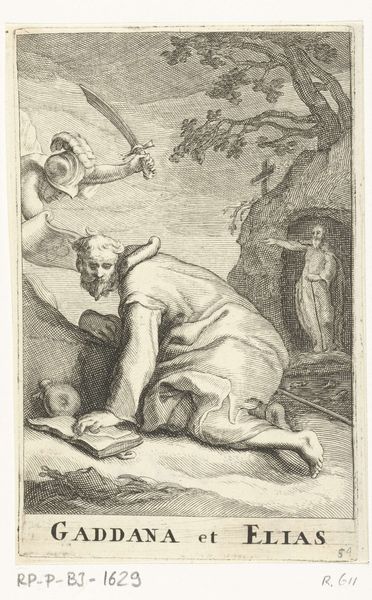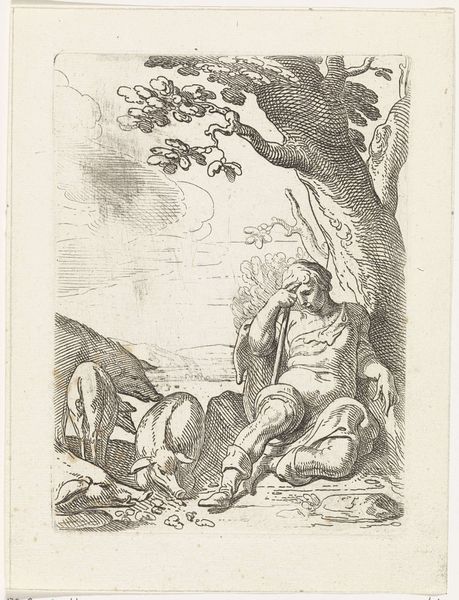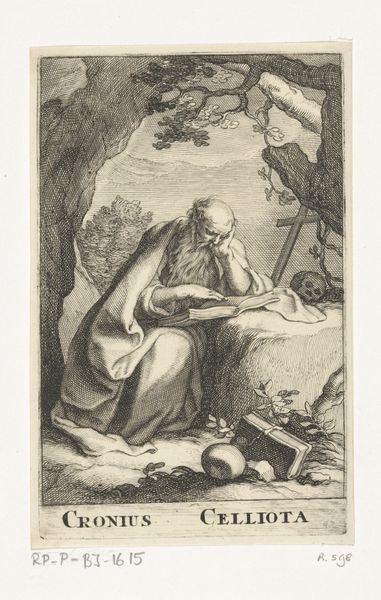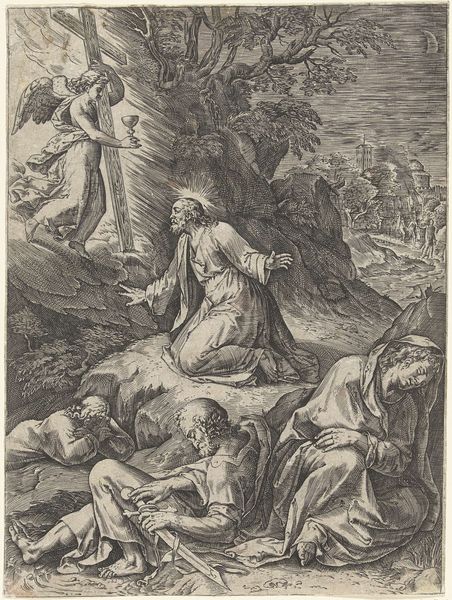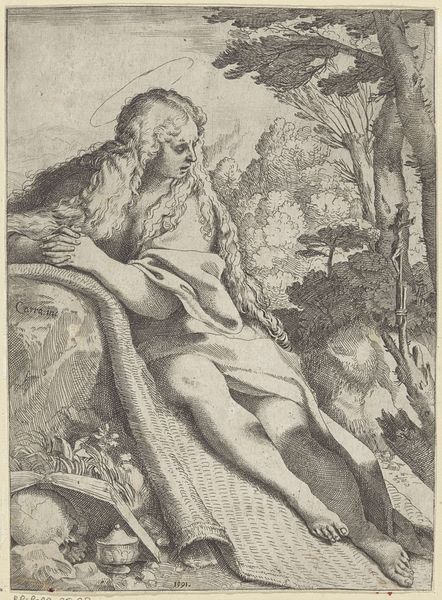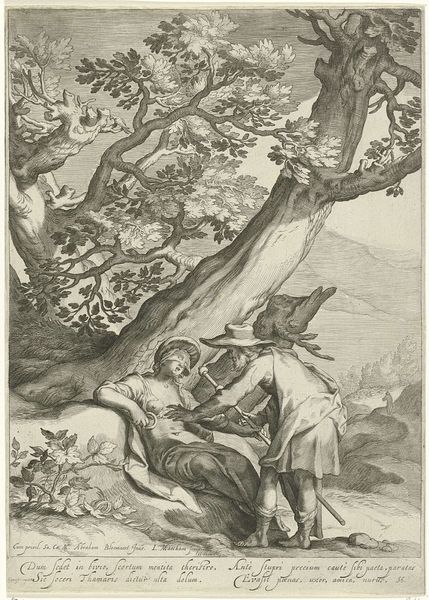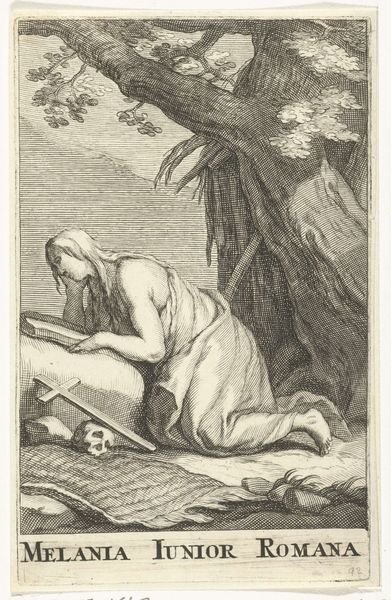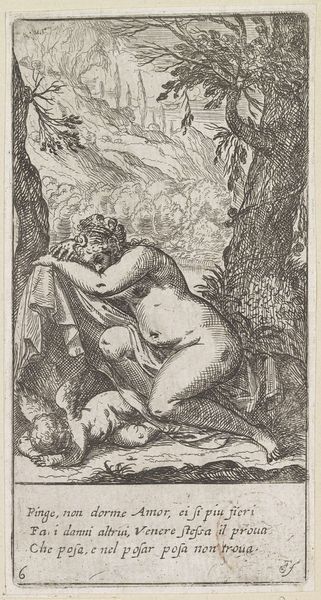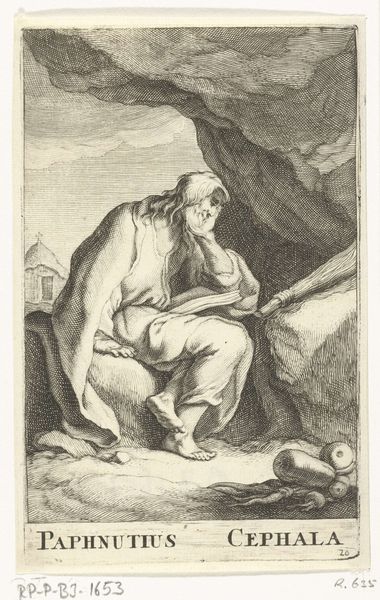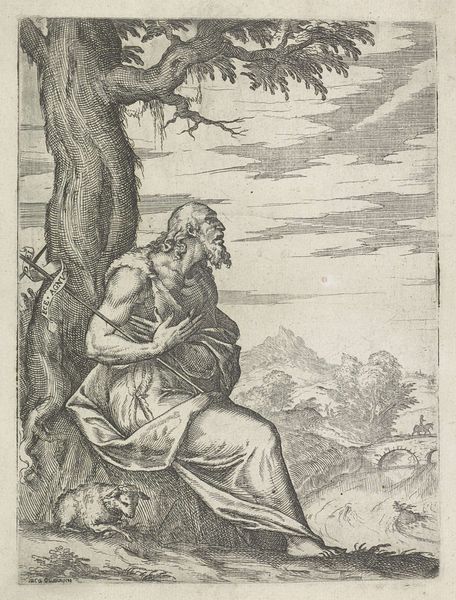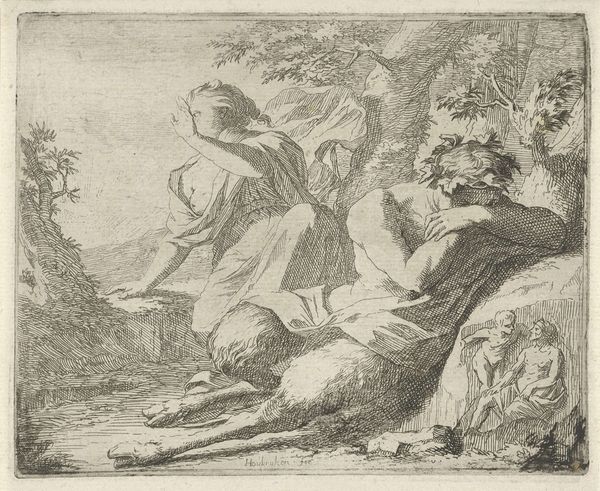
print, engraving
#
baroque
# print
#
landscape
#
figuration
#
history-painting
#
engraving
Dimensions: height 135 mm, width 85 mm
Copyright: Rijks Museum: Open Domain
Curator: This engraving, "Heilige Zeno" by Frederick Bloemaert, created after 1636, depicts Saint Zeno. What are your immediate thoughts? Editor: I’m immediately struck by the stark contrast in values and how Zeno seems very deliberately posed within this idealized landscape; a strange combination of vulnerability and authority. What is the source of these visual contradictions, do you think? Curator: Baroque engravings such as this one were used to illustrate complex spiritual concepts; the surrounding imagery can guide us. See how he's nestled under the crooked boughs of the tree next to an open book and squash? This symbolizes wisdom and, more specifically, God's generous bounty in creation. He holds sprigs of plant material in his left hand, as if blessing or engaging directly with the environment around him. Editor: I find the landscape interesting here; there's an implicit contradiction that reflects historical tensions. While we see this abundance of resources indicated in the pastoral composition, these idyllic images served the cultural agenda of the ruling classes who held power, justified by the Church, during the tumultuous and religiously violent Early Modern era. Can we look past the staged quality of the landscape? Curator: The iconography definitely conveys messages rooted in established Christian power structures of the time. The positioning of Zeno underneath the overhanging boughs provides both an organic canopy for meditation but also, from another perspective, feels weighted with symbolism that hints at the divine, but also mortality. There is this element of tension between the mortal body and spiritual legacy in the way the engraving has been composed, with delicate strokes highlighting how both the divine and temporal occupy shared spaces. Editor: Absolutely, this dichotomy mirrors Zeno's own personal story, I suspect, who advocated a return to simpler values against growing injustice and corruption. Curator: These echoes in material culture – paintings, books, buildings – reflect continuous desires to transcend. To create an ideal rooted in values, both explicitly sacred and inherent to nature, accessible through iconography. The images have psychological persistence. Editor: It really gives us much to consider: Frederick Bloemaert captures, perhaps unintentionally, complex dialogues about how the physical world is read within paradigms of political control, personal agency, and liberation. It challenges a viewer to move beyond aesthetics.
Comments
No comments
Be the first to comment and join the conversation on the ultimate creative platform.
